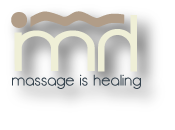Frequently Asked Questions
Question: “How will massage therapy benefit me?”
Answer: With professional massage therapy you can experience relief from muscular tension and pain, receive increased range of motion and a reduction of mental stress levels. Massage is a natural healing process that can deliver both physical and emotional benefits. (Treatments are specifically tailored to meet your needs.)
Question: “Do I have to take off all of my clothes?”
Answer: One of the keys to the success of your massage therapy session is your ability to relax and feel comfortable. Therefore, the decision is yours; remove only the articles of clothing that you are comfortable with removing. Traditional full-body massage treatments work best administered directly, without the barrier of clothing on the areas massaged. During a session you will be fully covered with a table sheet/blanket, only the area of your body that is being worked on is uncovered. Before and after the session, you will undress and dress in complete privacy. Clients remain dressed during a full cranial sacral session. If cranial sacral is added to another session, the bodywork will be adjusted, not to disrupt the client!
Question: “How often will I need treatments?”
Answer: Your body can let you know. Some people require only a few sessions to treat a specific problem, while others become regular users of massage therapy as both proactive and preventative healthcare. Massage can help maintain good muscle tone, flexibility and help correct muscular injuries.
Question: “Which regions of my body get massaged?”
Answer: I will ask you what you want to get out of the session. I will also ask you to describe any chronic problems that you are experiencing. This will determine the appropriate regions of your body that need attention. A typical full-body massage involves your back, neck, shoulders, arms, legs, feet and hands.
Question: “What should I do during the massage or bodywork session?”
Answer: Prior to the massage, feel free to ask me any questions about the technique or the upcoming session. During the massage, make yourself comfortable. I will either gently move you or tell you what is needed throughout the session (such as lifting your arm). Many people just close their eyes and completely relax, communicating if/when they need more or less pressure, another blanket, or anything else relevant to the session. If you have any questions regarding the session or about the particular technique you are receiving, feel free to ask.
Question: “Will I experience muscle soreness following a massage therapy treatment?”
Answer: Most people report feeling very relaxed and often experience significant relief from aches, pains and stress after a massage session. However some people, especially those who require deep-tissue massage, experience mild muscle soreness, which may last a day or two. Once the soreness is gone, they often notice heightened energy levels and an increased range of motion.
Question: “Are there any medical conditions that would make massage or bodywork inadvisable? ”
Answer: Yes. I always request that before a session begins, an intake form has been completed and we have discussed the information provided. The intake form allows you to list medications, health-related conditions, surgeries, and activities of daily living, so that a customized session can be created for you. There may be modifications required for the session, such as pressure or positioning. Nearly every person can receive some form of massage or bodywork. If you are under a doctor’s care, it is strongly advised that you receive a written recommendation for massage or bodywork prior to any session. Depending on the condition, approval from your doctor may be required.
Question: “How long should I wait to exercise after a massage or bodywork session?”
Answer: Many therapists recommend clients avoid strenuous exercise for at least 24 hours after a bodywork session. Exercising after a session can both increase muscle soreness and compromise the value of the soft-tissue work you’ve just received. “Strenuous exercise” includes activities such as running, weight lifting, high intensity aerobics, or power yoga classes. Light exercise such as moderate walking, gentle stretching, or swimming laps at an easy pace is OK for healthy individuals. One widely accepted view in favor of this 24-hour recovery period is that sustained pressure on connective tissue makes it more gel-like. The technical term for this change is thixotropic effect. This state of increased softness lasts about 24 hours, so high-intensity exercise may pull or move the tissue back to old patterns or even induce new strain patterns.
Question: “What should I do following a massage or bodywork session?”
Answer: I usually suggest clients take it easy that evening and the following day. Drinking water and staying hydrated can further reduce any bodywork-related soreness. Take a hot Epsom salt bath and drink gently calming teas such as chamomile or passionflower to facilitate sleep and reduce the stress that is commonly seen as a contributing factor in chronic muscle tension and soreness. If you’re dealing with an injury, these guidelines would have to be adjusted, but these basic suggestions seem to work well for most of my clients.
